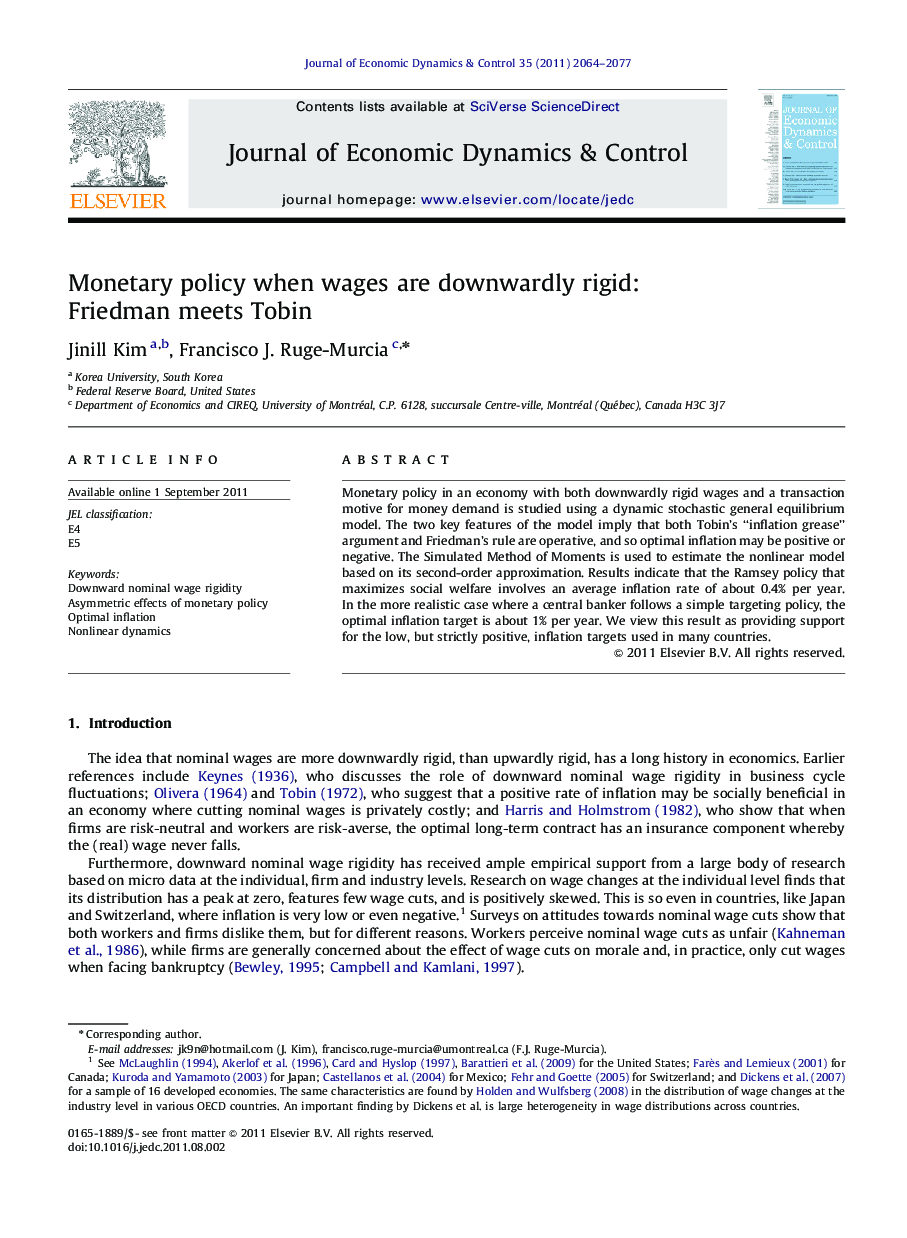| Article ID | Journal | Published Year | Pages | File Type |
|---|---|---|---|---|
| 5099313 | Journal of Economic Dynamics and Control | 2011 | 14 Pages |
Abstract
Monetary policy in an economy with both downwardly rigid wages and a transaction motive for money demand is studied using a dynamic stochastic general equilibrium model. The two key features of the model imply that both Tobin's “inflation grease” argument and Friedman's rule are operative, and so optimal inflation may be positive or negative. The Simulated Method of Moments is used to estimate the nonlinear model based on its second-order approximation. Results indicate that the Ramsey policy that maximizes social welfare involves an average inflation rate of about 0.4% per year. In the more realistic case where a central banker follows a simple targeting policy, the optimal inflation target is about 1% per year. We view this result as providing support for the low, but strictly positive, inflation targets used in many countries.
Related Topics
Physical Sciences and Engineering
Mathematics
Control and Optimization
Authors
Jinill Kim, Francisco J. Ruge-Murcia,
